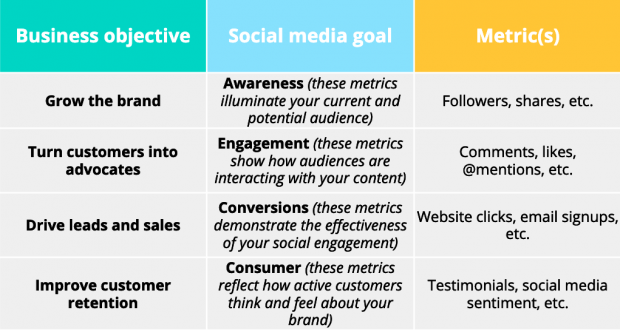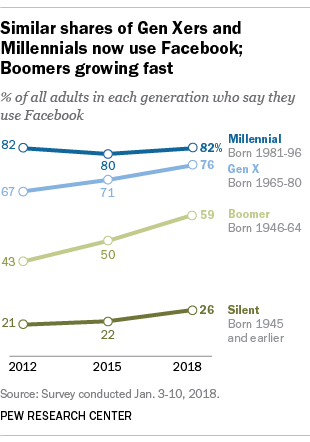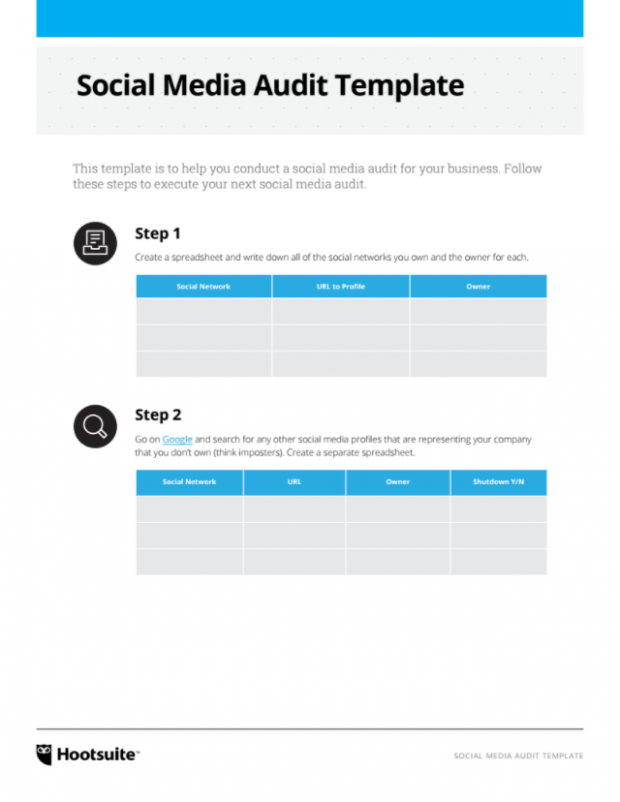A social media marketing strategy is a summary of everything you propose to do and hope to achieve on social media. It guides your actions and lets you know whether you re succeeding or failing. Every post, reply, like, and comment needs to serve a goal.
The more particular your social media marketing strategy is, the more effective the execution can be. Keep it concise. Do not make your plan so lofty and broad that it’s unattainable or unimaginable to measure.
In this post, we’ll stroll you thru an eight-step plan to create a successful social media advertising and marketing plan of your personal.
How to create a social media marketing strategy
Step 1. Set social media marketing objectives that align with business targets
Set S.M.A.R.T. goals
The first step to making a winning technique is to establish your targets and objectives. Without targets, you have no method to measure success or return on investment (ROI).
Each of your goals needs to be:
- Particular
- Measurable
- Attainable
- Relevant
- Time-bound
That is the S.M.A.R.T. goal framework. It’ll guide your actions and ensure they lead to real business outcomes.
Monitor meaningful metrics
Vanity metrics like retweets and likes are simple to track, however, it’s hard to prove their real worth. Instead, focus instead on targets like leads generated, web referrals, and conversion rate.
You could want to track different targets for different channels or even different uses of each channel. For instance, Benefit Cosmetics drives brand awareness with its paid social campaigns, however, measures acquisition and engagement for organic social posts.
Be certain that to align your social media targets with your overall social media marketing strategy. It will make it simpler for you to show the worth of your work and get executive buy-in and investment.
Begin growing your social media marketing strategy by writing down at least three targets for social media.
Step 2. Learn everything you can about your audience
Create audience personas
Understanding who your audience—and ideal customer—is and what they want to see on social is essential to creating content that they’ll like, comment on, and share. It’s also critical if you want to turn social media followers into customers for your enterprise.
Try making audience/buyer personas. These permit you to consider your potential fans, followers, and customers as real people with real needs and wants. And that will permit you to think more clearly about what to offer them.
Gather real-world data
Don’t make assumptions. Think Fb is a greater network for reaching Baby Boomers than Millennials? Well, the numbers show that Millennials still outnumber Boomers on the platform.
Social media analytics could also provide lots of useful information about who your followers are, where they live, which languages they speak, and the way they interact with your brand on social. These insights permit you to refine your social media marketing strategy and better goal your social adverts.
Jugnoo, an Uber-like service for auto-rickshaws in India, used Fb Analytics to learn that 90 % of their users who referred other customers were between 18- and 34-years-old, and 65 % of that group was utilizing Android. They used that info to target their adverts, resulting in a 40 % decrease cost per referral.
Step 3. Research the competition
Odds are, your competitors are already utilizing social media—and which means you could learn from what they are already doing.
Conduct a competitive analysis
A competitive analysis permits you to understand who the competition is and what they are doing well (and not so well). You will get a great sense of what’s expected in your industry, which can help you set social media targets of your own.
This analysis will also assist you to spot opportunities. For instance, maybe one of your competitors is dominant on Fb, however, has put little effort into Instagram or Twitter. You may want to concentrate on the networks where your audience is underserved, rather than attempting to win followers away from a dominant player.
Engage in social listening
Social listening is another method to keep an eye on the competition. Right here’s how to use Hootsuite streams for social listening and monitoring rivals:
As you track competitor accounts and related industry keywords, you might notice shifts in the way those channels are used. Or, you may spot a particular post or campaign that really hits the mark—or totally bombs. Keep an eye on this data and use to it evaluate your own targets and plans.
Step 4. Conduct a social media audit
Examine your current efforts
When you are already utilizing social media tools, you should take a step back and have a look at what you have already done and accomplished. Ask yourself the following questions:
- What’s working, and what’s not?
- Who’s connecting with you on social?
- Which networks does your target audience use?
- How does your social media presence compare to that of your competitors?
When you gather all this data in one place, you will have a great starting point for planning how to enhance your outcomes.
Hootsuite has created a social media audit template which you could follow for each step of the process.
Your audit needs to provide you with a clear image of what purpose each of your social accounts serves. If the aim of an account isn’t clear, think about whether it’s worth keeping.
To help you decide, ask yourself the following questions:
- Is my audience here?
- If so, how are they utilizing this platform?
- Can I use this account to assist achieve meaningful enterprise targets
Asking these tough questions will assist to keep your strategy on track and focused.
Look for impostor accounts
During the audit, you could uncover fraudulent accounts utilizing your business name or the names of your merchandise.
These imposters could be harmful to your brand, never mind capturing followers that need to be yours. Report them. You might want to get your Twitter and Fb accounts verified to make sure your followers and fans know they’re dealing with the real you.




